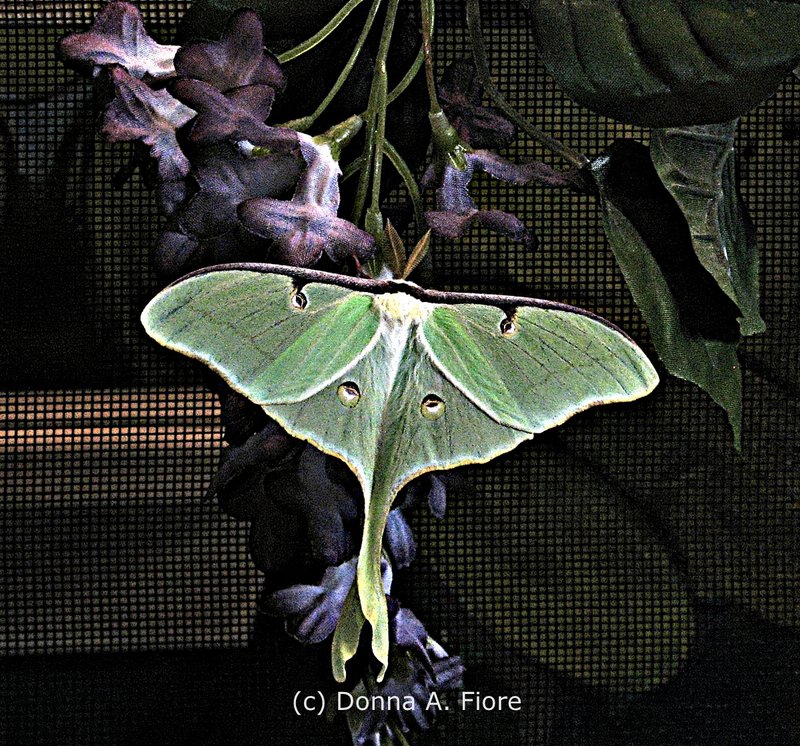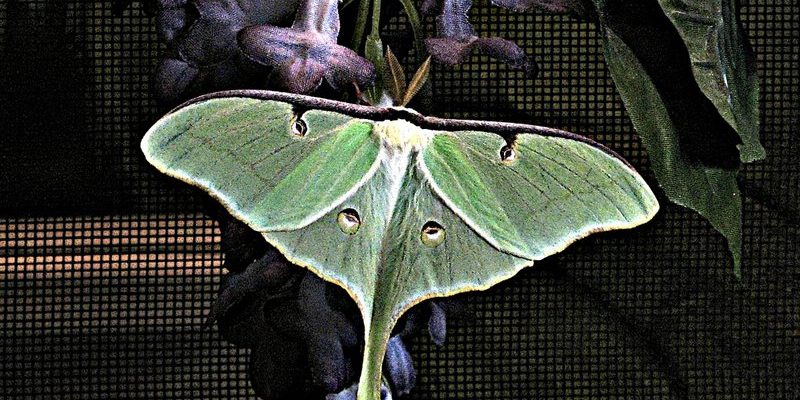
Picture this: millions of years ago, the ancestors of today’s Luna moths began their journey through the ages. Just as people evolve and change, so do these creatures, adapting to their environments and facing challenges along the way. So, grab a cup of coffee, and let’s delve into the captivating evolution and history of this enchanting moth.
What is a Luna Moth?
Before we dive into its history, let’s get acquainted with the Luna moth. This incredible insect, scientifically known as *Actias luna*, belongs to the Saturniidae family. It’s recognizable by its large, pale green wings that can span up to four to five inches. The wings are adorned with beautiful yellow eyespots that not only add to its beauty but also serve as a defense mechanism against predators.
You might be wondering about their surprising lifecycle. Luna moths are not your average moth. They start as tiny eggs, hatch into caterpillars, and then enter a pupal stage before emerging as adults. This metamorphosis is where their story truly begins. Luna moths only live for about a week as adults, which is quite short. But during that time, they make an impression! Their primary goal? To mate and lay eggs, ensuring the next generation carries on their legacy.
The Origins of the Luna Moth
The Luna moth’s history dates back millions of years. They’re believed to originate from the North American continent, appearing sometime in the last few decades of the Cretaceous period. These moths have adapted to various environments, thriving in forests across eastern North America and parts of Canada.
Their presence in fossil records has puzzled scientists. Here’s the thing: while many insects have evolved significantly, Luna moths have retained much of their original form. This ability to remain relatively unchanged is a testament to their successful adaptation to their habitat, allowing them to survive where other species have struggled.
What’s even more intriguing is how they’ve managed to maintain their population. By choosing specific plants for their larvae to feed on, like walnut, hickory, and sweetgum trees, they ensure there’s always a food source available, even in changing environments. This clever strategy has helped them flourish despite challenges like habitat loss.
The Life Cycle of the Luna Moth
Now, let’s talk about the life cycle of the Luna moth. It’s a fascinating journey filled with transformation. It all starts when a female lays around 200 to 400 eggs on leaves of suitable host plants. These eggs are small and pale, making them hard to spot among the foliage.
Once the eggs hatch, the caterpillars emerge. Known as larvae, these little munchers are quite the sight. They have a distinct green color that helps them camouflage against leaves, warding off hungry birds and other predators. During their growth, they go through several stages called instars, shedding their skin multiple times as they grow.
After about a month of indulging in a leafy feast, the caterpillars form a cocoon in which they will undergo metamorphosis. This is a crucial stage in their journey. Inside the protective casing, they transform into pupae, a phase where they’ll develop into beautiful adult moths. Finally, when the time is right, they break free from their cocoon, ready to make a splash in the world.
Habitat and Distribution
You might be curious about where you can find these remarkable moths. The Luna moth primarily inhabits wooded and semi-wooded areas of North America, from Nova Scotia to Florida. They prefer environments that offer plenty of host plants for their larvae, as well as sheltered areas for adults to rest during the day.
Interestingly, their distribution hasn’t changed much over time, despite the alterations in their surrounding environment. Here’s the kicker: Luna moths are sensitive to pollution and habitat loss. This means that in areas where forests have been replaced by urban settings, their populations can dwindle. Conservation efforts are crucial to preserving their habitats and ensuring they continue to thrive.
Additionally, their nocturnal behavior means they’re often overlooked. Most people do not realize they’re fluttering around until they see one near a light at night. But if you’re lucky enough to spot a Luna moth, consider yourself fortunate!
Cultural Significance of the Luna Moth
Throughout history, the Luna moth has held a unique place in various cultures. Often associated with transformation and change, these moths symbolize new beginnings in many traditions. For some Native American tribes, the Luna moth represents emotions and intuition, guiding people through their journey of self-discovery.
In fantasy literature and art, these moths often appear as mystical beings, adding a touch of intrigue and wonder. Their stunning appearance makes them an inspiring subject for artisans and storytellers alike. Just think about it—they’re like the ethereal butterflies of the night, captivating our imagination and making us reflect on our connection with nature.
Moreover, their short adult lifespan is a reminder of the beauty and fragility of life. The Luna moth encourages us to embrace change and cherish each moment, no matter how fleeting it may be.
Conservation Status and Threats
Unfortunately, the beautiful Luna moth faces several threats, primarily due to human activity. Habitat loss from urban development, agriculture, and pollution poses a significant risk. Since they depend on specific plants for their larvae, the decline of these plants directly impacts Luna moth populations.
Another concern is the increased use of pesticides. Many insects are vulnerable to chemicals that are meant to control pests. A single spray can disrupt their life cycle and lead to decreased numbers. Here’s the thing: every action we take can ripple out and affect creatures like the Luna moth.
Conservation efforts are vital to ensure that future generations can experience the wonder of these incredible insects. Simple steps, like planting native trees and reducing pesticide use, can make a difference in preserving their habitats.
The Future of the Luna Moth
As we look to the future, there’s hope for the Luna moth. With increasing awareness about the importance of biodiversity and conservation, more people are working to protect these exquisite insects. Community initiatives focused on native planting and preserving natural habitats play a crucial role in their survival.
The Luna moth is a reminder of the delicate balance within ecosystems. By protecting their habitats and supporting conservation efforts, we help not just the Luna moth, but many other species that share the same environment.
So next time you catch a glimpse of this enchanting creature fluttering around your porch light, take a moment to appreciate its rich history and the ongoing battle for its survival. The Luna moth’s journey is a testament to resilience and beauty in nature, and it deserves our respect and protection.
In conclusion, the story of the Luna moth—from its ancient origins to its vibrant life today—is a reminder of nature’s wonders and challenges. By learning more about them and supporting conservation efforts, we can help ensure that these majestic creatures continue to grace our nights for generations to come.

